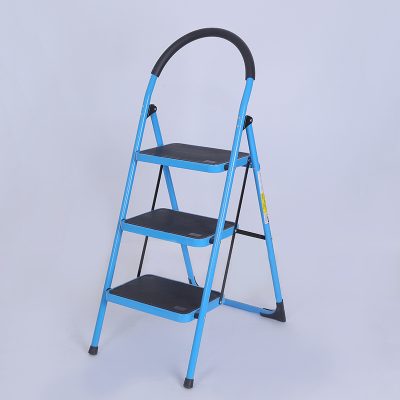In the bustling world of retail, efficiency and accessibility are key to maintaining smooth operations and ensuring customer satisfaction. Step ladders stand as essential tools in this environment, providing convenient access to high shelves, displays, and storage areas. Their practical design, safety features, and versatility make them invaluable assets for retail employees across various departments. In this exploration, we delve into the indispensable role of step ladders in retail operations, highlighting their contributions to enhancing efficiency, organization, and customer service.
Ascending to Retail Excellence:
Retail environments are characterized by diverse merchandise displays, shelving units, and storage areas, all of which require frequent maintenance and restocking. Step ladders serve as essential tools for retail employees, enabling them to access elevated areas safely and efficiently. Whether it’s retrieving items from high shelves, organizing inventory, or setting up promotional displays, step ladders provide a stable and secure platform for employees to work from, ensuring that retail spaces are well-maintained and merchandise is easily accessible to customers.
Safety Features for Peace of Mind:
Safety is paramount in retail operations, where employees handle merchandise and interact with customers in high-traffic areas. Step ladders are designed with features to mitigate risks and ensure user confidence. Non-slip steps and feet provide stability on various flooring surfaces, reducing the likelihood of accidents. Many step ladders also feature handrails or top platforms for added support and stability, allowing employees to maintain balance while reaching for items. Additionally, lightweight construction and collapsible designs make step ladders easy to transport and store when not in use, optimizing space efficiency in retail environments.
Applications Across Retail Departments:
Step ladders find applications across various departments in retail settings, from grocery stores and department stores to specialty boutiques. In grocery stores, employees use step ladders to access high shelves for restocking products, changing signage, and performing routine maintenance tasks. In department stores, step ladders facilitate setting up displays, arranging merchandise, and organizing inventory in different departments. Specialty boutiques utilize step ladders for reaching inventory stored in elevated areas and creating eye-catching displays to attract customers. Their versatility and ease of use make step ladders indispensable tools for optimizing efficiency and organization in retail operations.
Choosing the Right Step Ladder:
Selecting the appropriate step ladder depends on factors such as height requirements, weight capacity, and specific application needs. Retailers should consider the height needed to reach elevated areas and ensure that the ladder’s weight capacity meets the requirements for employees and merchandise. Additionally, factors such as material construction, safety features, and portability should be taken into account when choosing the right step ladder for retail operations. Investing in high-quality step ladders ensures employee safety and efficiency in performing tasks throughout the retail environment.
Conclusion:
In conclusion, step ladders play a vital role in enhancing efficiency, organization, and customer service in retail operations. With their practical design, safety features, and versatility, they empower employees to access elevated areas safely and efficiently, ensuring that merchandise is readily available to customers and retail spaces are well-maintained. Whether it’s restocking shelves, setting up displays, or performing routine maintenance tasks, step ladders are indispensable tools for optimizing productivity and enhancing the overall shopping experience. Retailers can rely on step ladders to elevate their operations and meet the demands of a fast-paced retail environment with confidence and ease.







